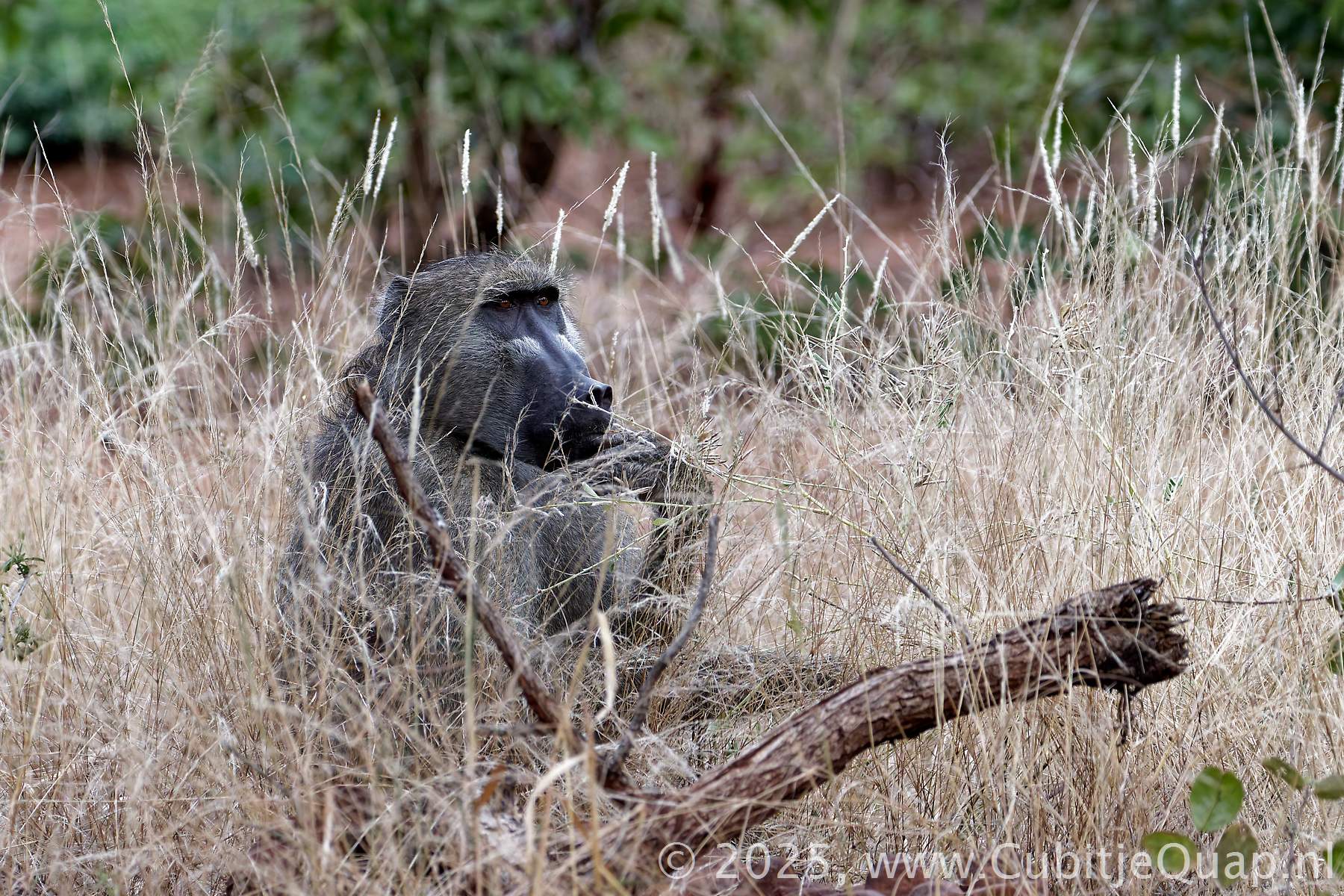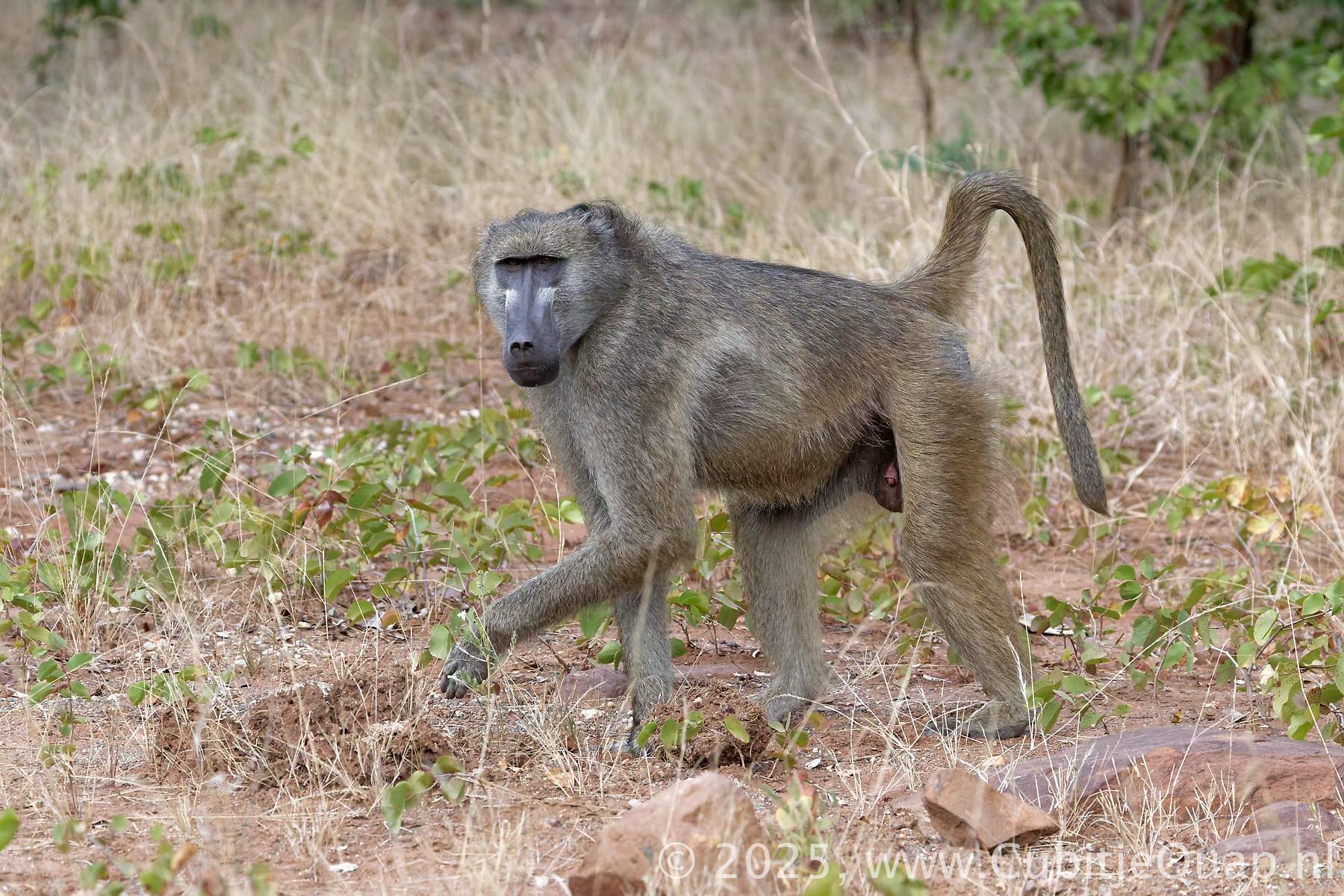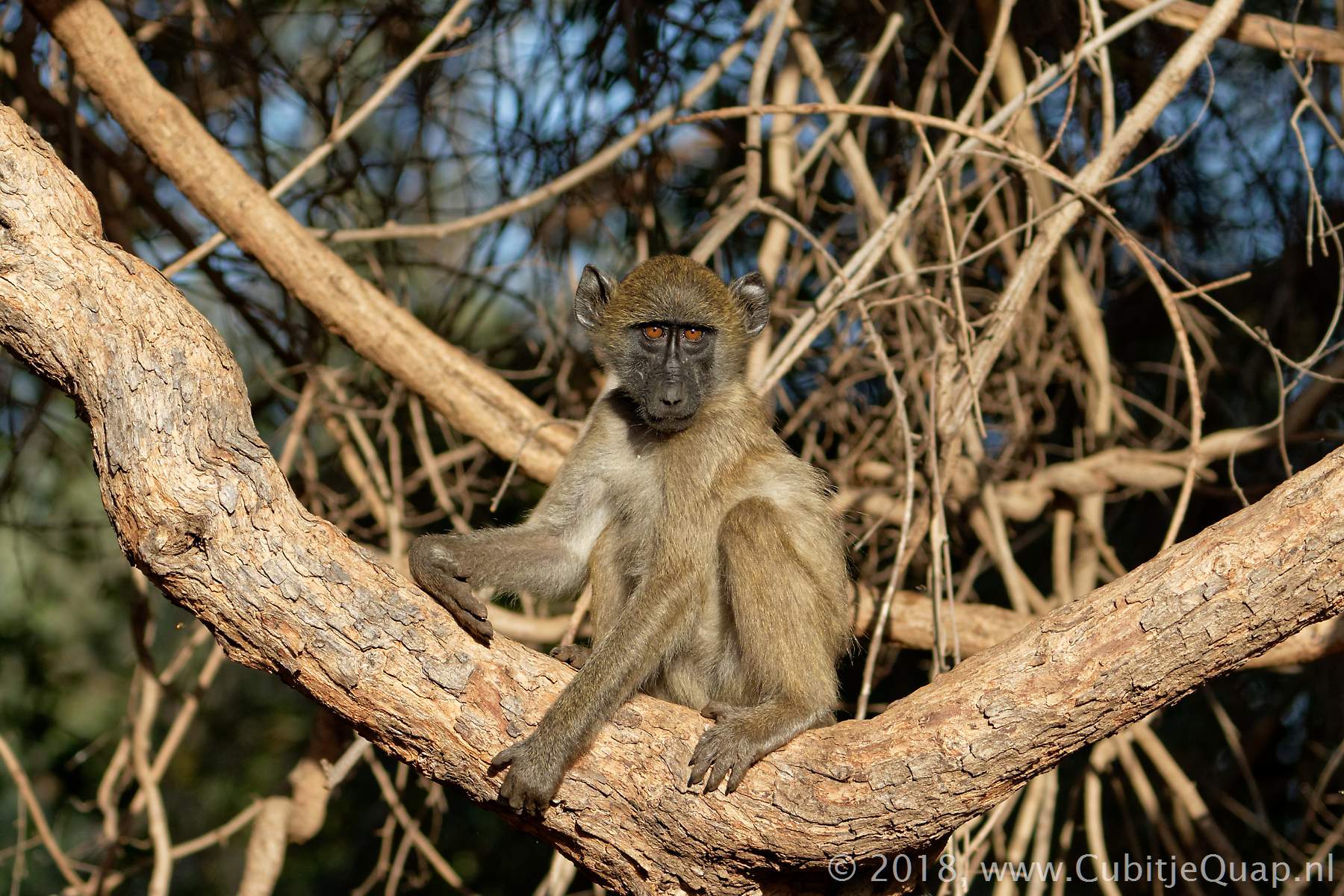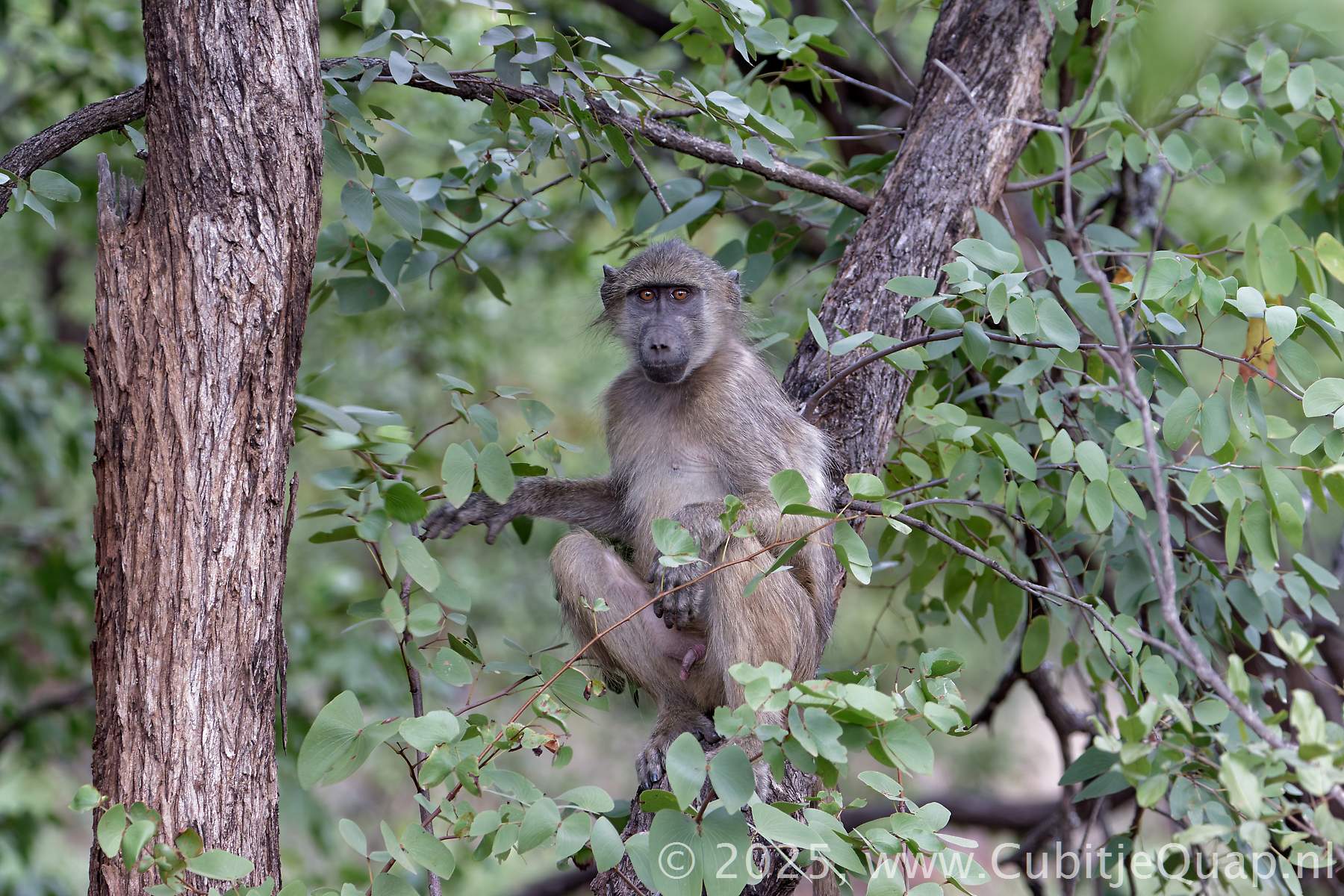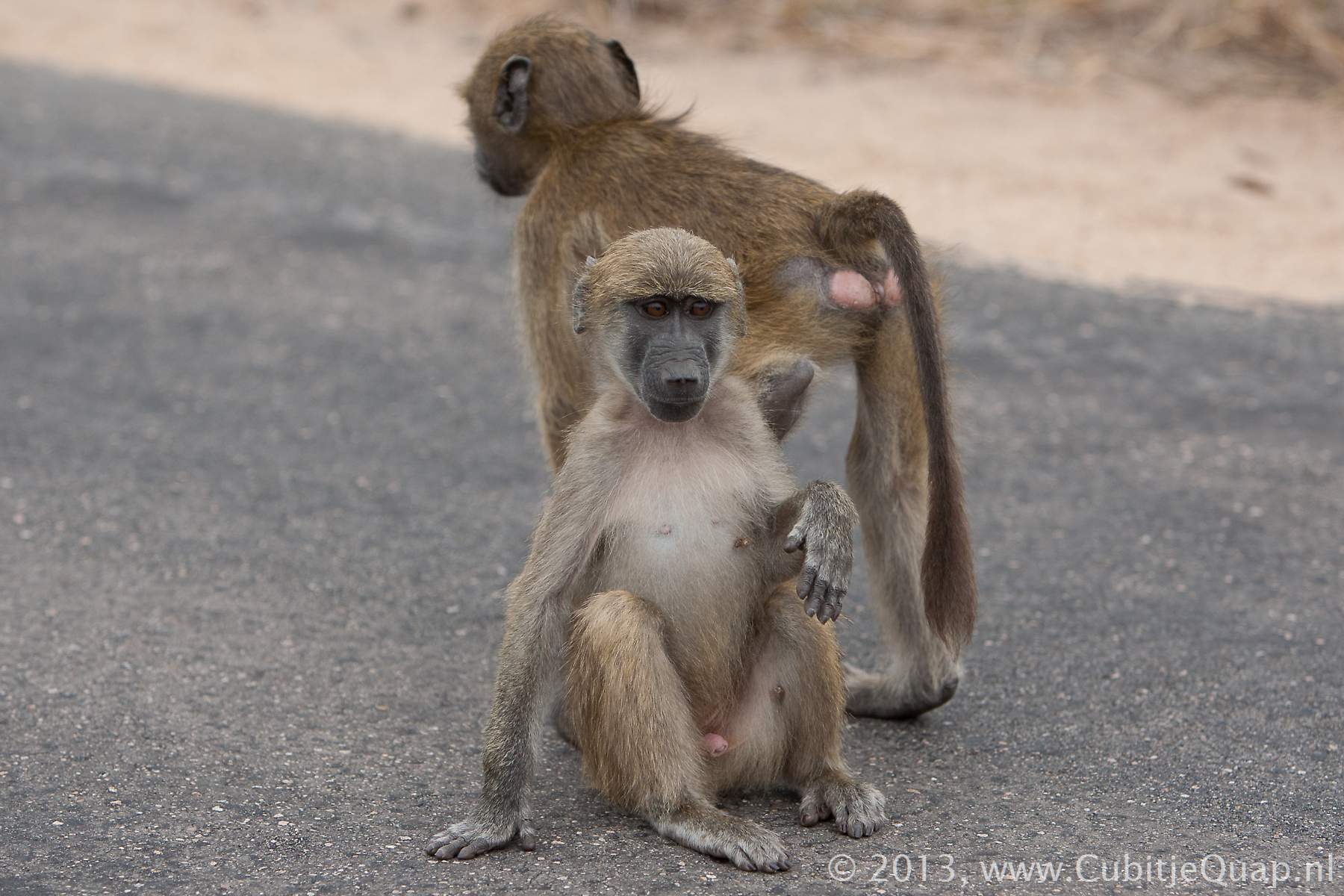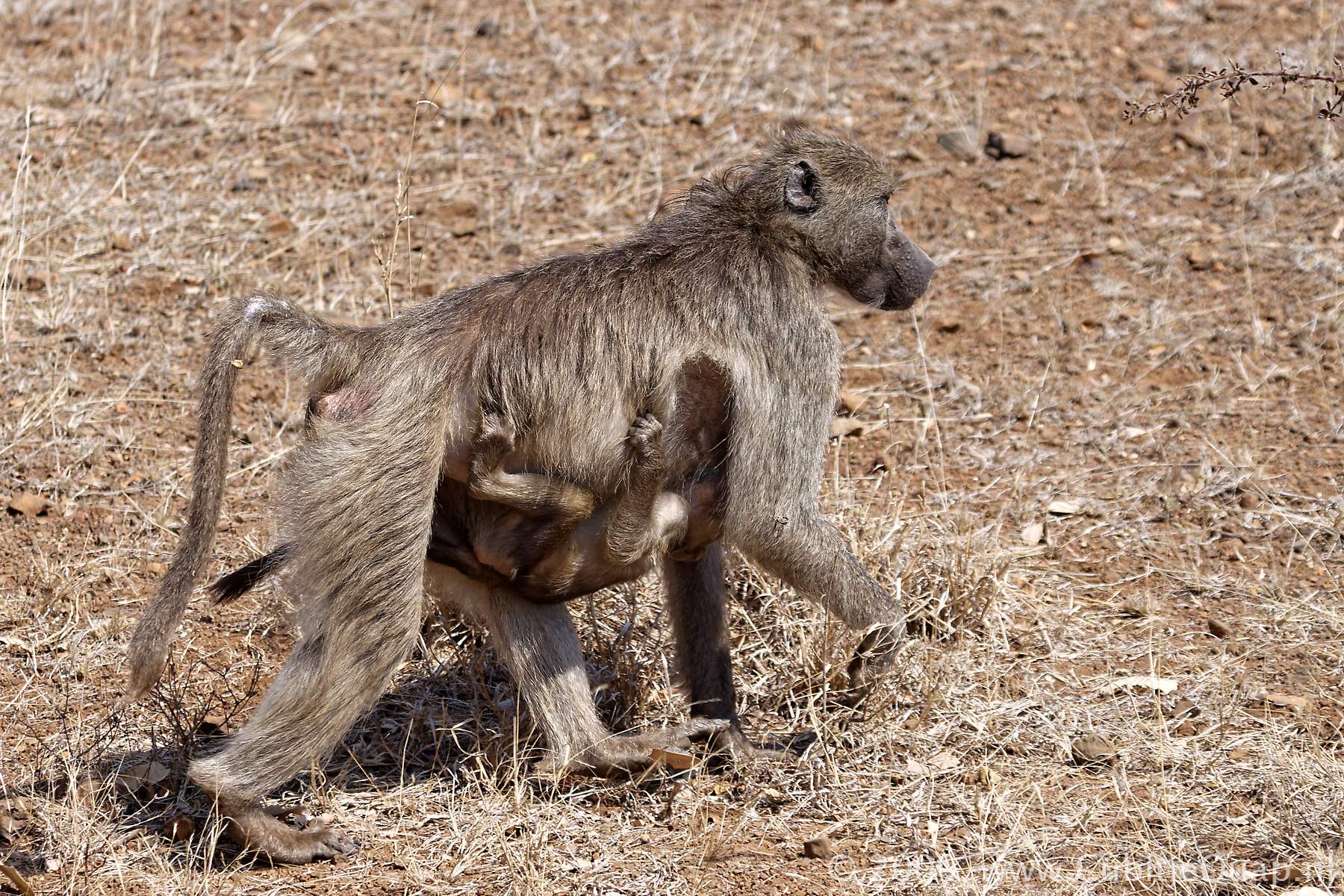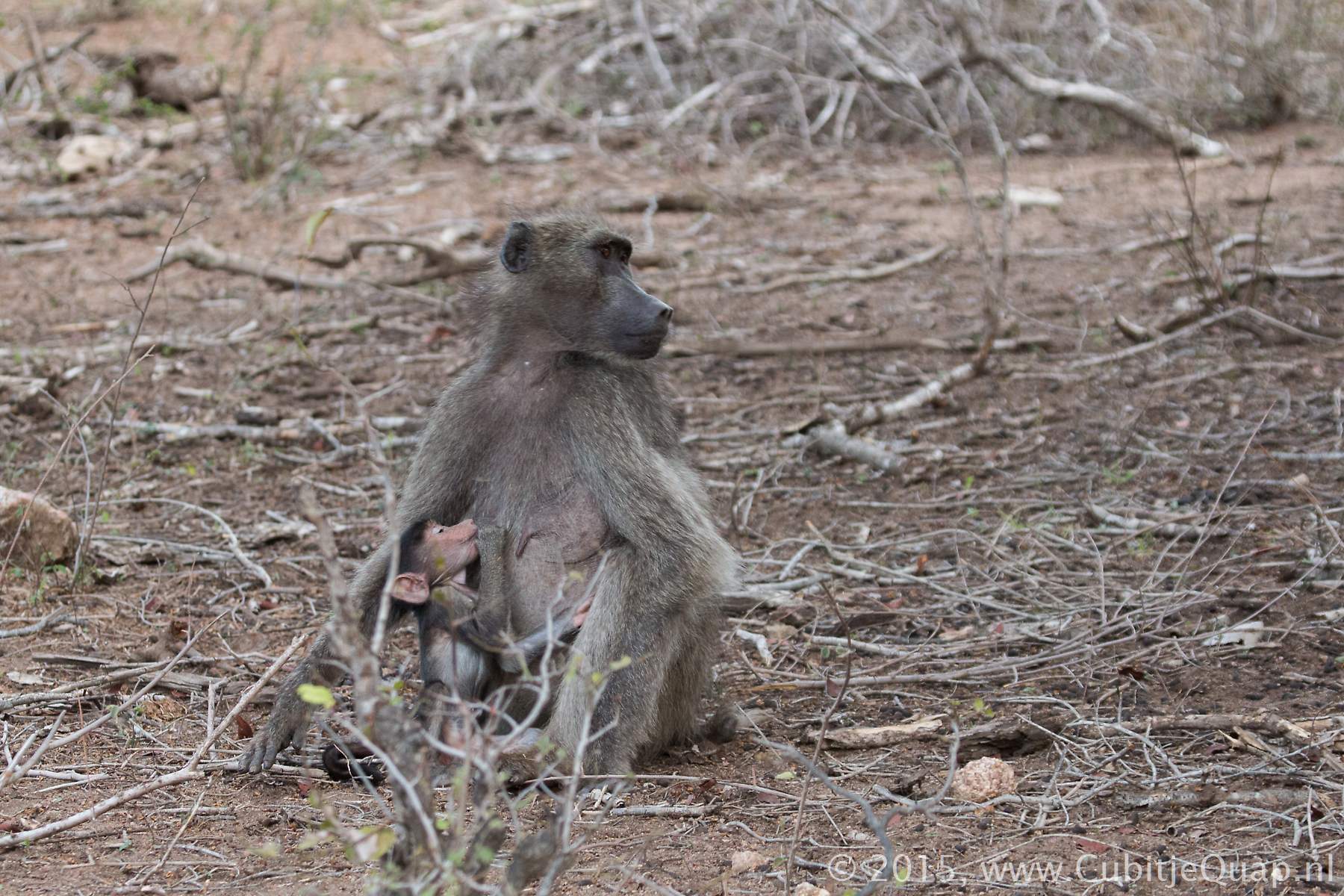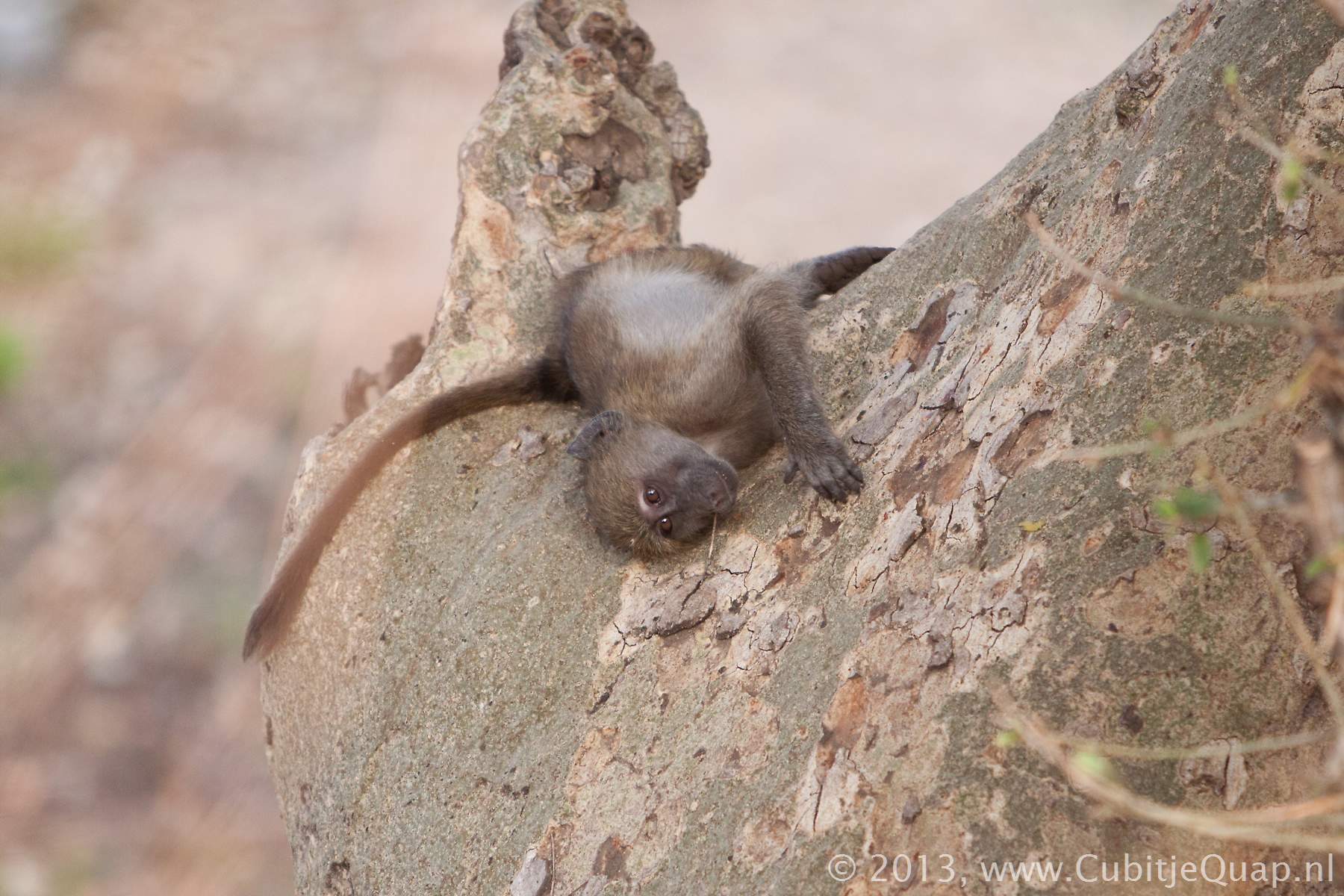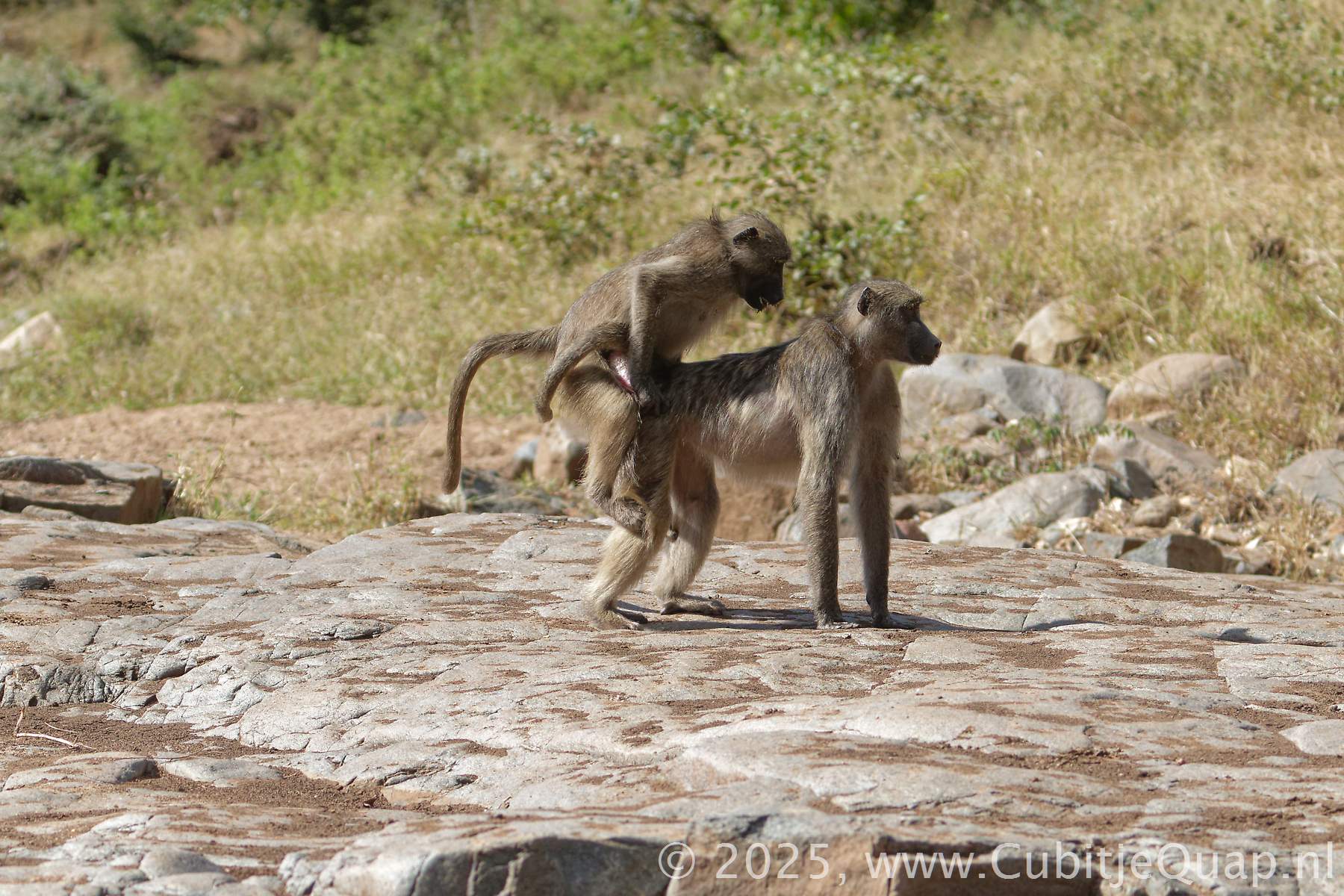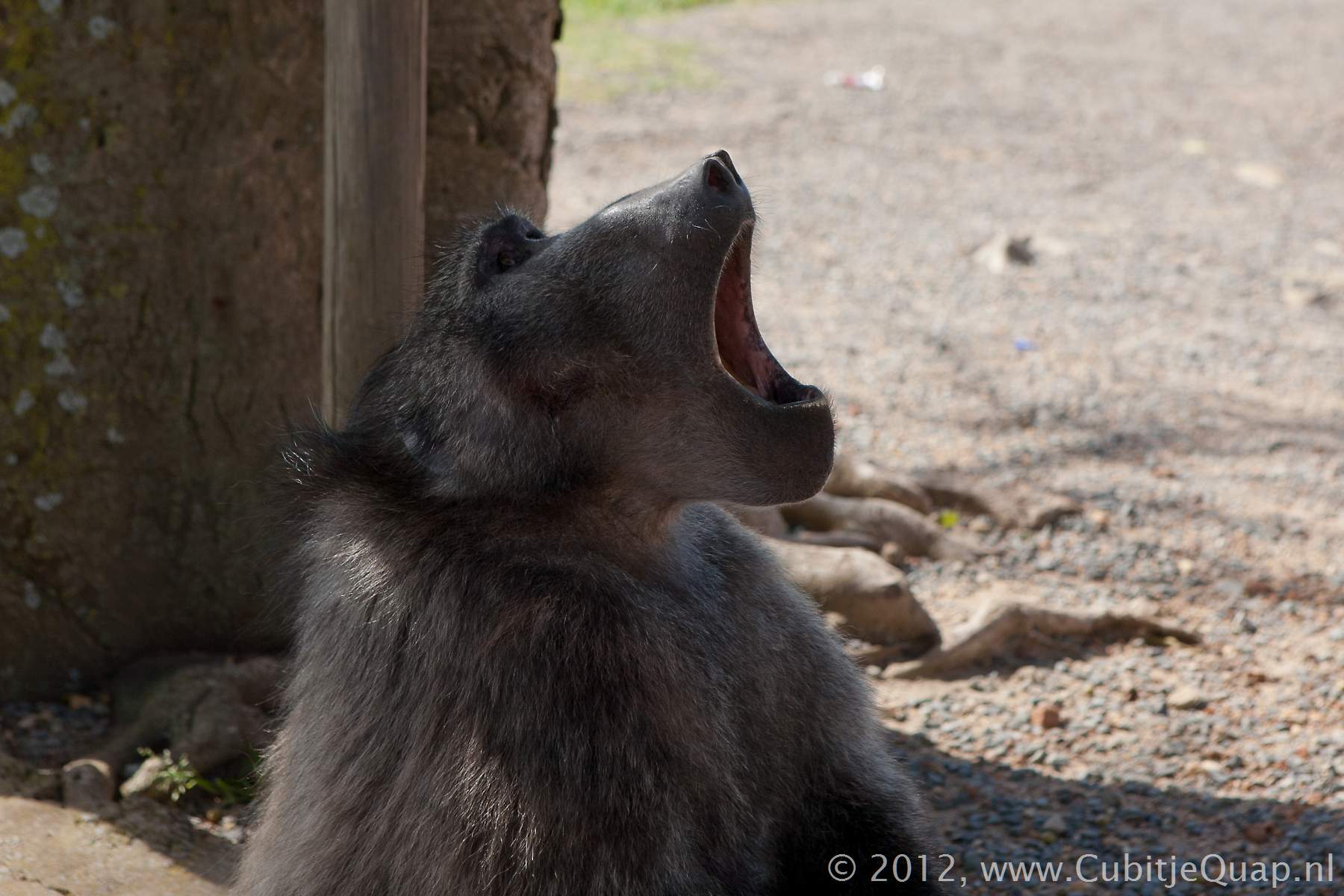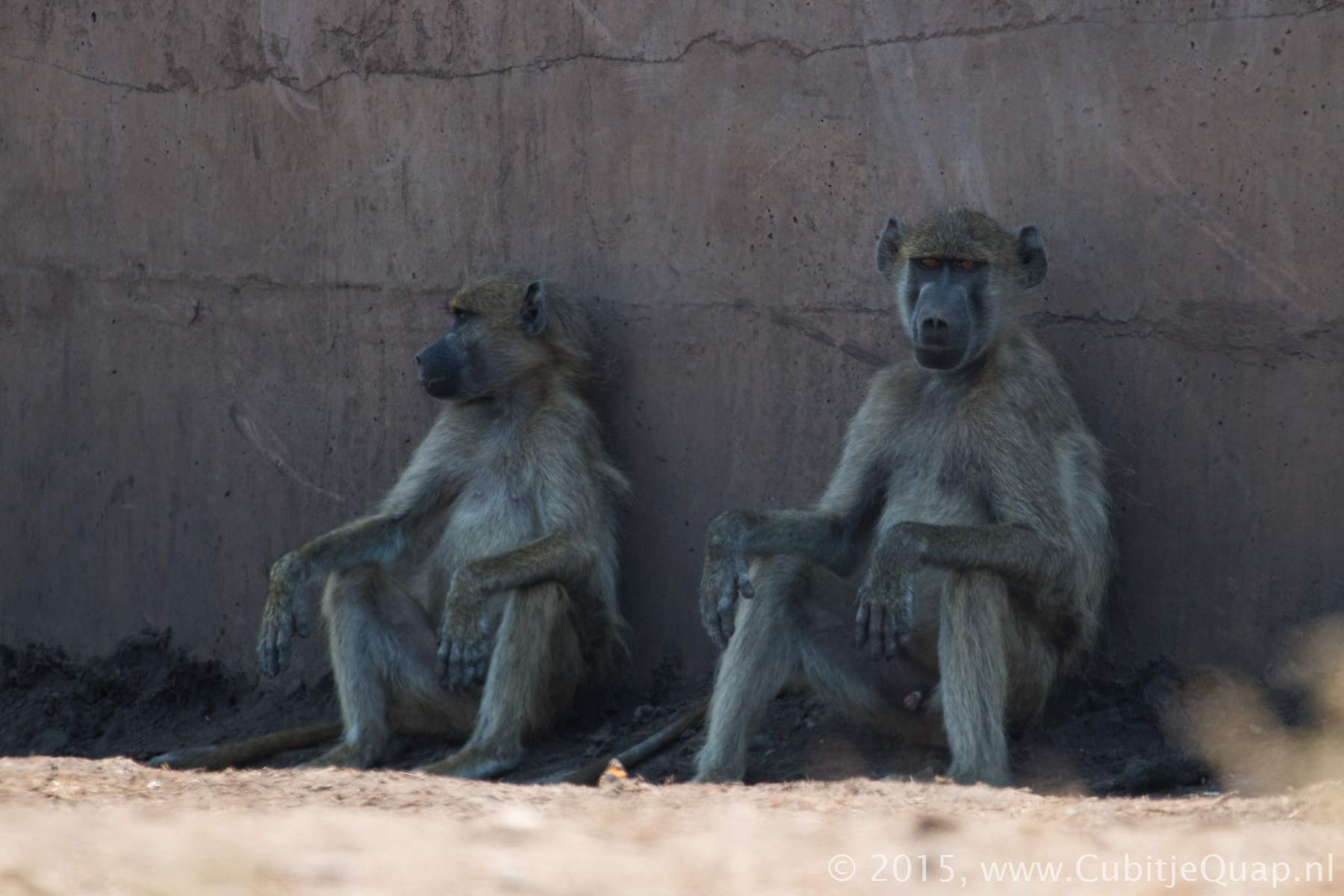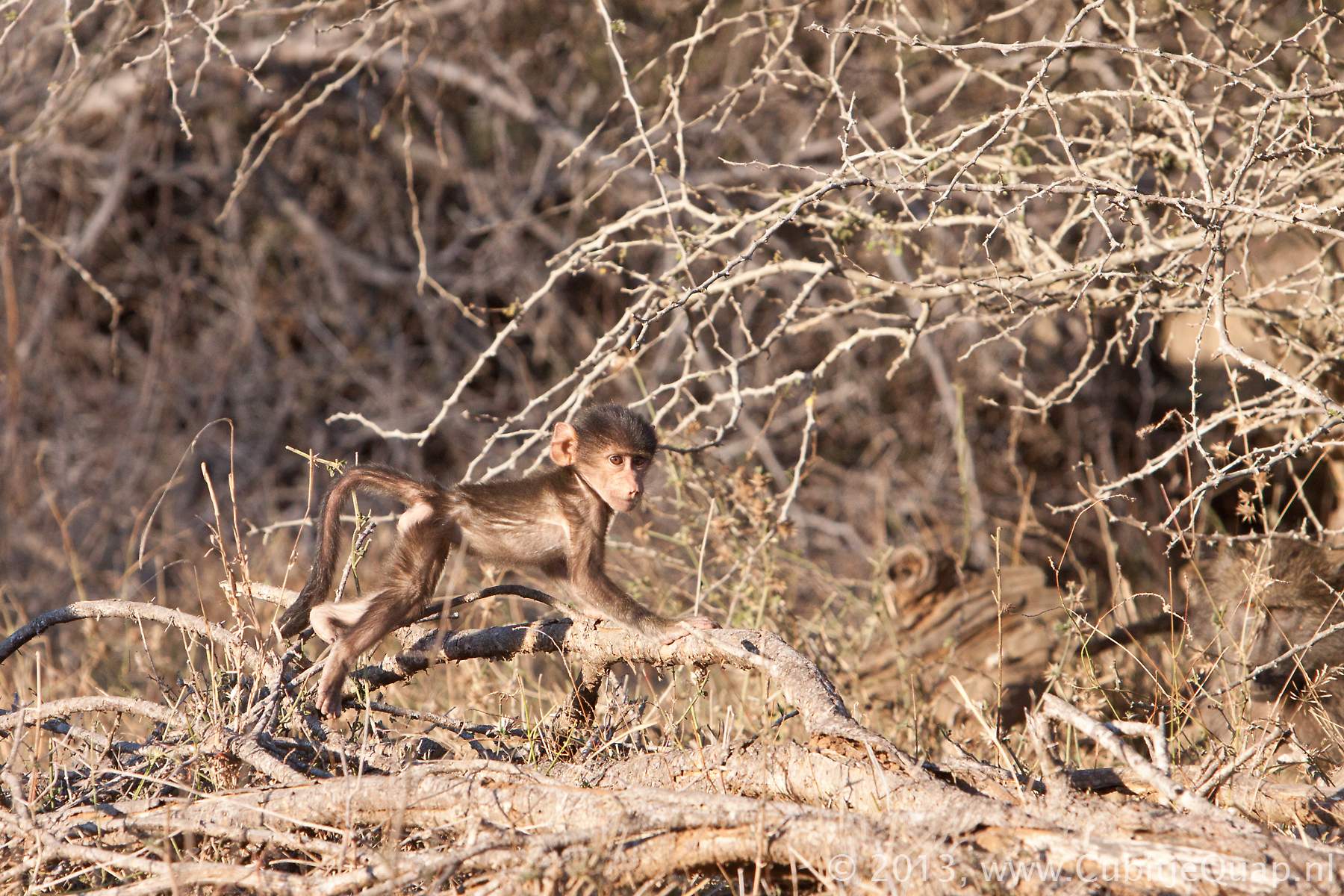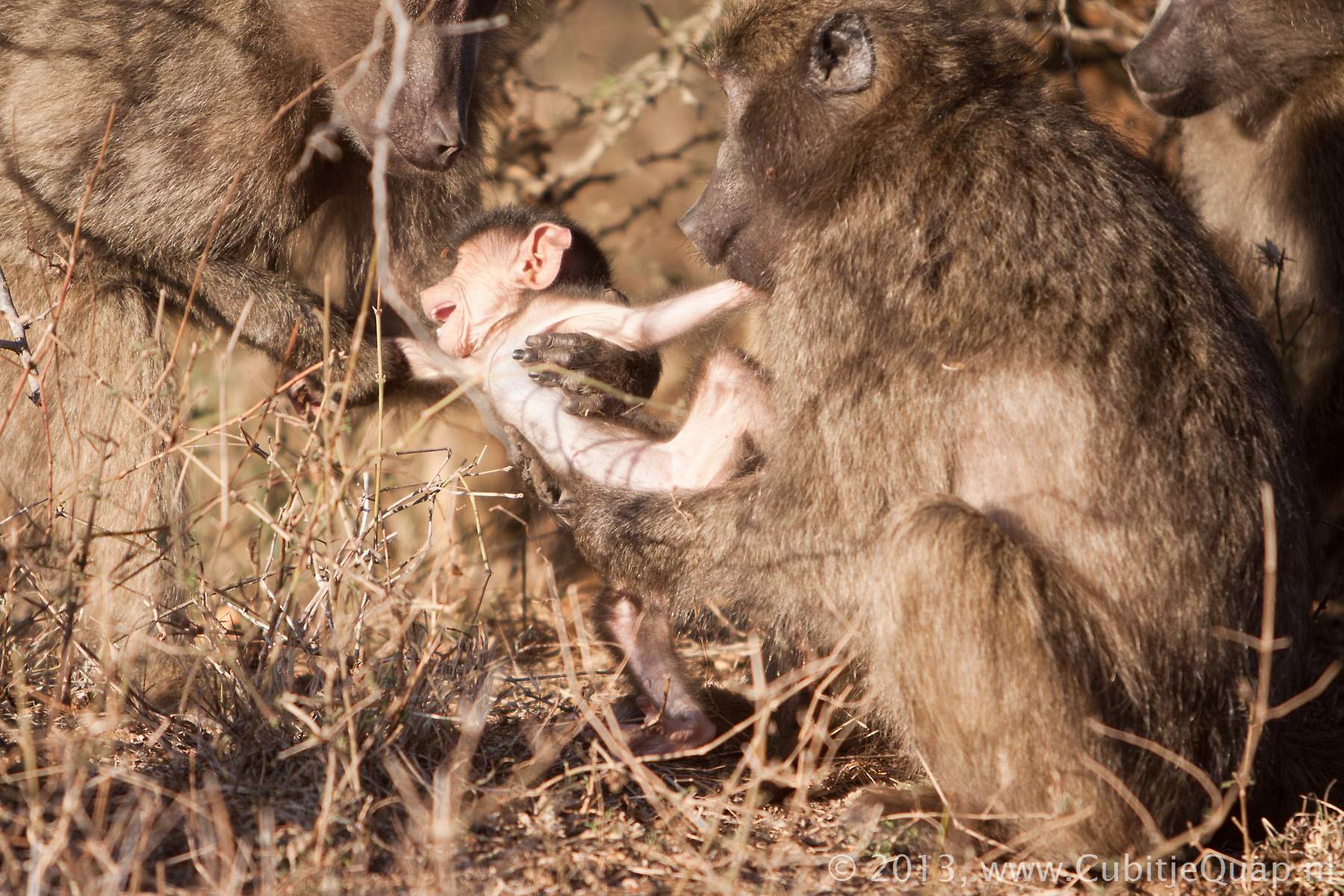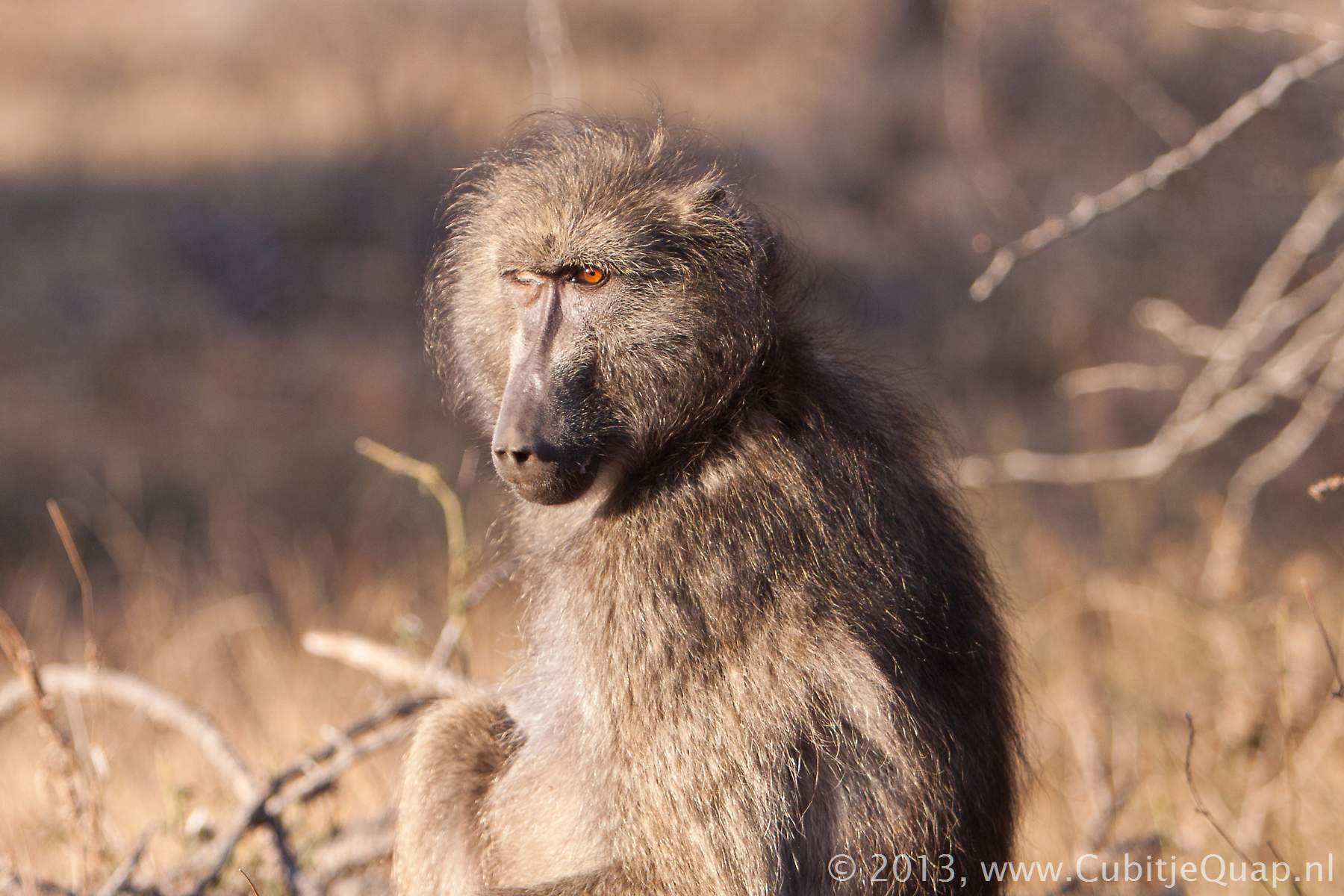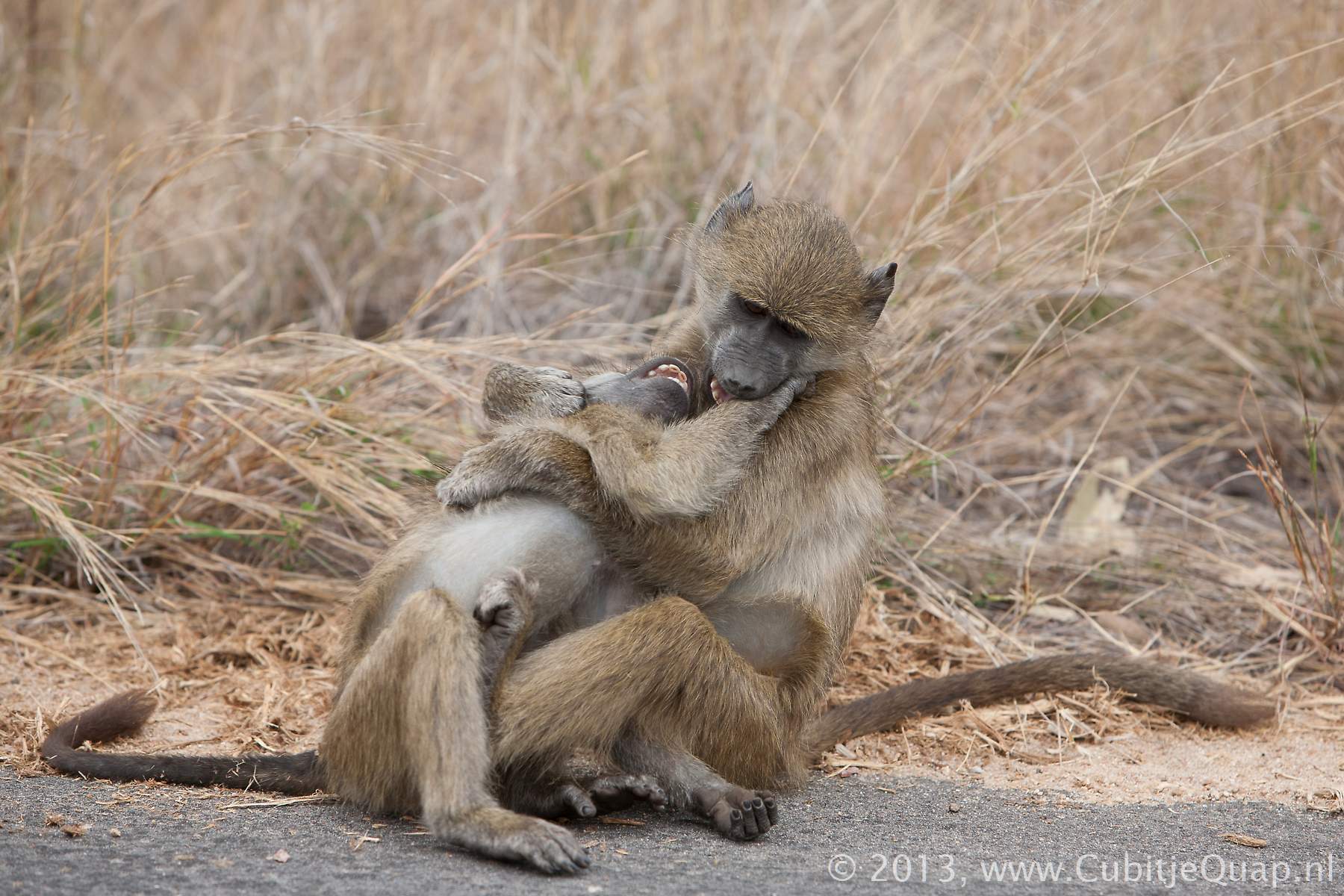Chacma baboon
Taxonomy
The taxonomy of baboons is unsettled. They are widely distributed throughout Africa, with five major forms that interbreed where their distribuytions meet. The baboons of southern Africa are considered to be a subspecies ([F2]Papio hamadryas ursinus[/F2]) or a full species ([F2]Papio ursinus[/F2]). An often encountered other common name for the baboons in southern Africa is also Savanna baboon Geographic distinction
Appearance
Male: Total length 120 - 160 cm; tail 60 - 85 cm; mass 25 - 45 kg
Female: Total length 100 - 120 cm; tail 50 - 60 cm; mass 12 - 20 kg
The largest primate (other than man) in southern Africa. It is relatively slender and lightly built, although adult males have powerfully built shoulders and heads. When the baboon is on all fours the shoulders stand higher than the rump. The long, somewhat dog-like muzzle is particularly pronounced in the males. The body has a covering of course hair, which may be light greyish-yellow through to dark grey-brown, but coat colour is variable, even within a troop. Only the male has a mane of long blackish hair on the neck and shoulders. The hair on the upper surface of the hands and feet is dark brown to black in colour. Characteristic is the posture of the long tail; the first third of the tail is held upwards and the remainder droops downwards, giving it a broken appearance. Males have a single, hard pad of naked grey skin tha extends across both buttocks, but the female has one smaller pad on each buttock. During gestation the skin around the female buttock pads is bright scarlet while at the onset of the menstrual cycle the skin distends enormously into rather unsightly swollen red protuberances.
Habitat
Wide habitat tolerance but it requires rocky cliffs or tall trees to which to retreat at night or when threatened. Drinking water is essential. It inhabits mountains, hill ranges and riverine woodland.
Behaviour
A highly gregarious and social species that lives in troops of 15 to sometimes 100 or more. Within a baboon troop all adult males are dominant over all females. The adult males have a strict rank order and only the dominant males mate with the oestrous or receptive females, although subordinate males do mate with young females and those that are not in oestrous. It is only in their fifth year that the males become dominant over the females. The dominant male determines when the troop will move. The females and infants remain closest to this male, with the non-breeding females staying close to the subordinate males. The youngsters and subadults move around the edges of the troop. Water sources are visited each day. Very vocal and the bark or 'bogom' of the adult male is a common day-time sound of the hills and savanna of southern Africa.
Food
Omnivorous. Digs for roots and bulbs, eats wild fruit, seeds, leaves and flowers, insects and other invertibrates. Raids cultivated crops. Will eat young antelope, hares mice and birds if encountered. In rocky areas a feeding baboon troop leaves a trail of overturned stones and small rocks.
Interesting links
Wikipedia - Chacma baboonAfrican Wildlife FoundationWikipedia - Baboon species of the world

